Drosera intricata Planch.
Drosera intricata is named from the Latin intricatus (entangled), in reference to its tangled form.
Western Australia – known from Busselton; east of Perth; Cranbrook; Jerramungup; Bowelling; Katanning; Mt Cooke area; New Norcia.
Drosera intricata grows in grey or brown clayey sand in the beds of fast-flowing seasonal creeks, floodways, watersheds, and in shrubland with paperbarks (Melaleuca sp.) on the margins of winter-wet watercourses and swamps.
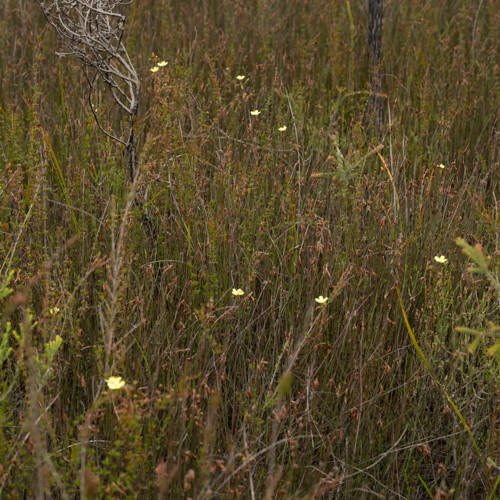
Drosera intricata. Photo © Boaz Ng.
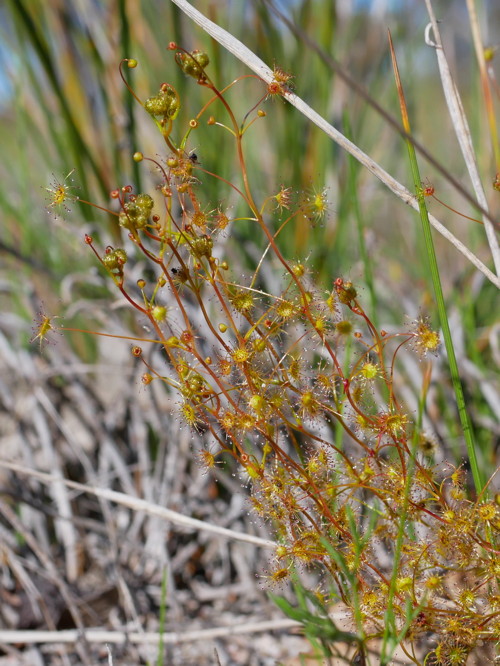
Drosera intricata. Photo © Thilo Krueger.
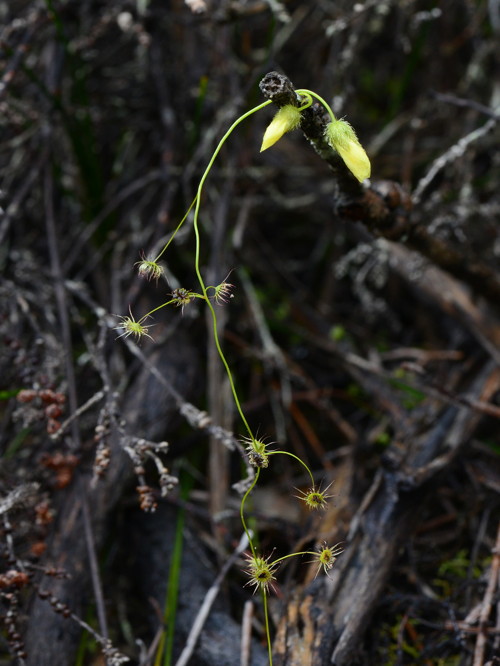
Drosera intricata. Photo © Richard Nunn.
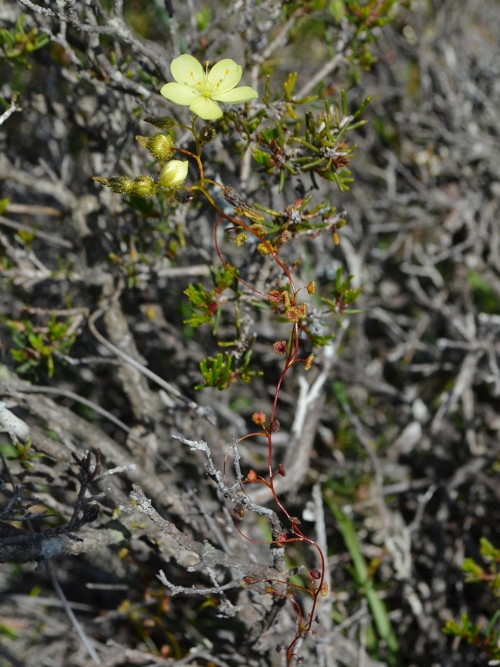
Drosera intricata. Photo © Thilo Krueger.
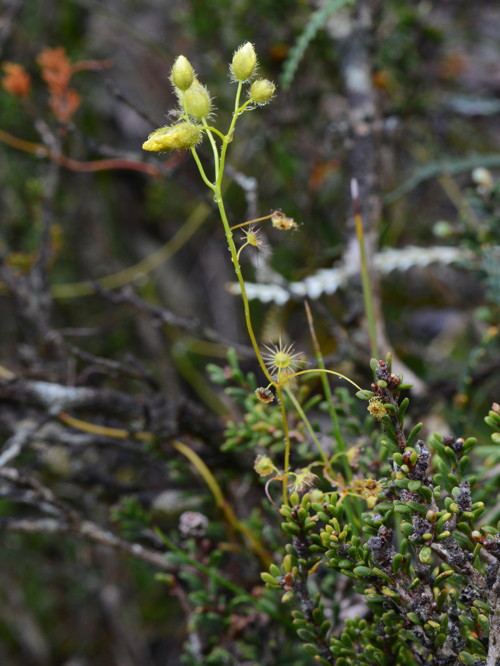
Drosera intricata. Photo © Richard Nunn.
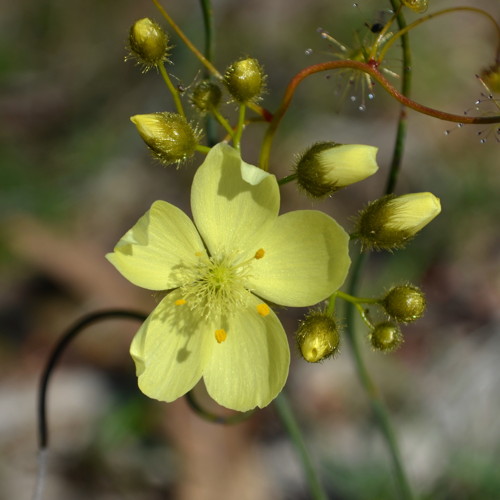
Drosera intricata. Photo © Thilo Krueger.
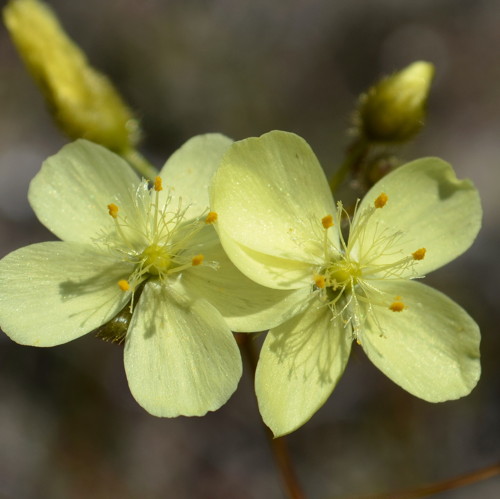
Drosera intricata. Photo © Thilo Krueger.
Drosera koikyennuruff T.Krueger & A.S.Rob.
The specific epithet refers to koikyennuruff, the Noongar Aboriginal name for the Stirling Range, where this taxon occurs. The name means “mist over hills”.
Western Australia - only known from two locations, one in Stirling Range National Park and one from nearby Woogenellup.
Grows in low heath amongst Mallee scrub in sandy clay soils.
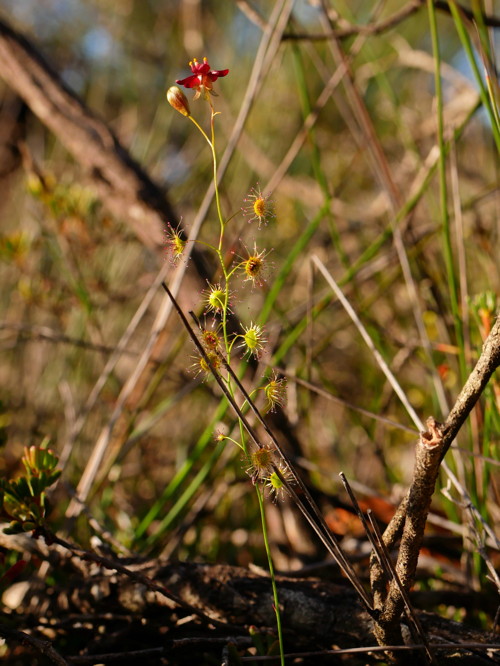
Drosera koikyennuruff. Photo © Thilo Krueger.
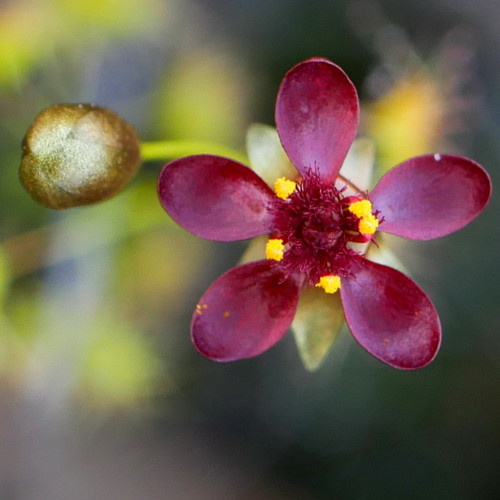
Drosera koikyennuruff. Photo © Thilo Krueger.
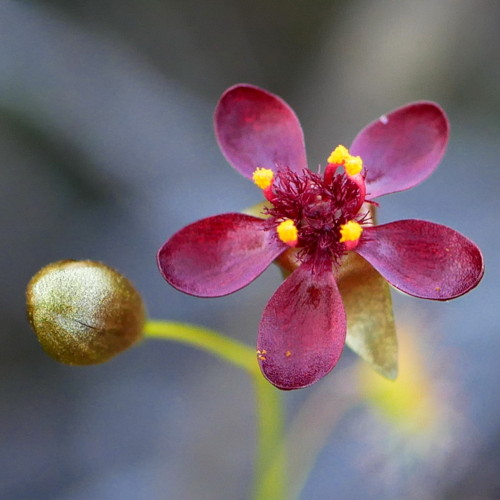
Drosera koikyennuruff. Photo © Thilo Krueger.
Drosera lowriei N.G.Marchant
The epithet, lowriei, honours Allen James Lowrie (1948 - 2021), of Western Australia, a botanist of Australian native carnivorous plants and triggerplants (Stylidiaceae), explorer, author, photographer and botanical illustrator.
Western Australia – between Hyden and Lake King.
Grows in loam soils covered with moss on the aprons of granite outcrops where there is water run-off. All locations dry out completely by summer.
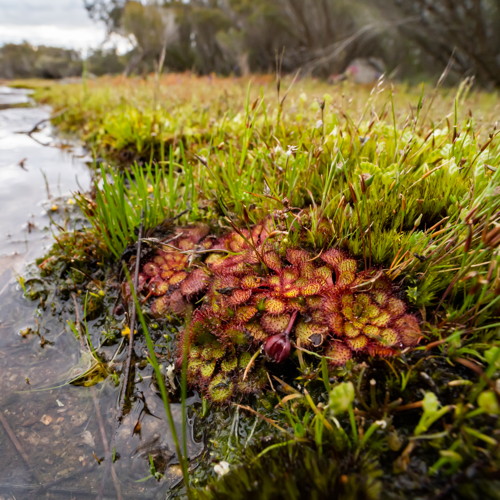
Drosera lowriei. Photo © Boaz Ng.
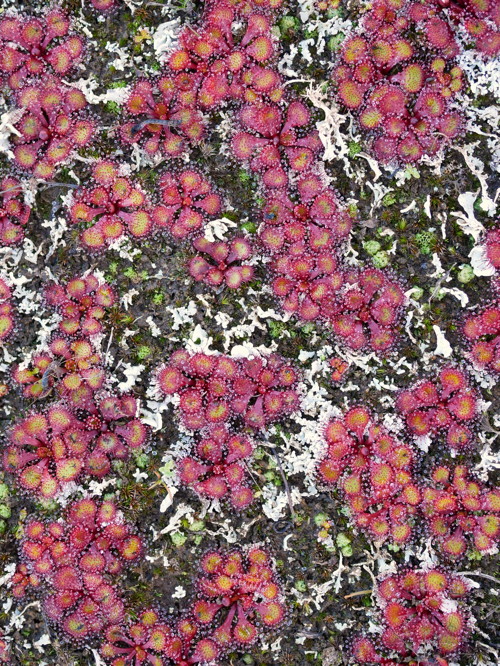
Drosera lowriei. Photo © Thilo Krueger.
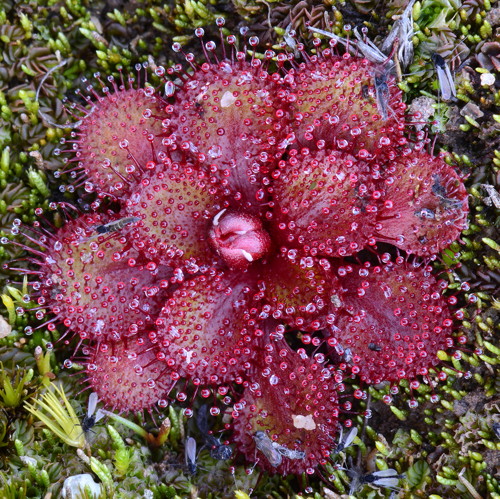
Drosera lowriei. Photo © Richard Nunn.
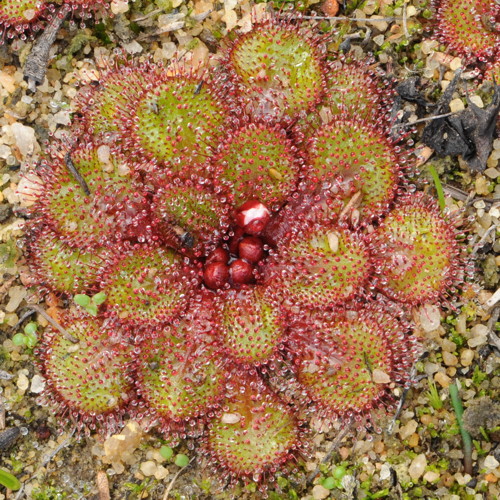
Drosera lowriei. Photo © Richard Nunn.
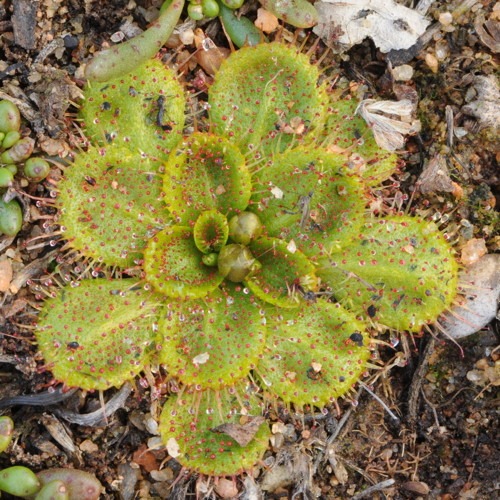
Drosera lowriei. Photo © Richard Nunn.
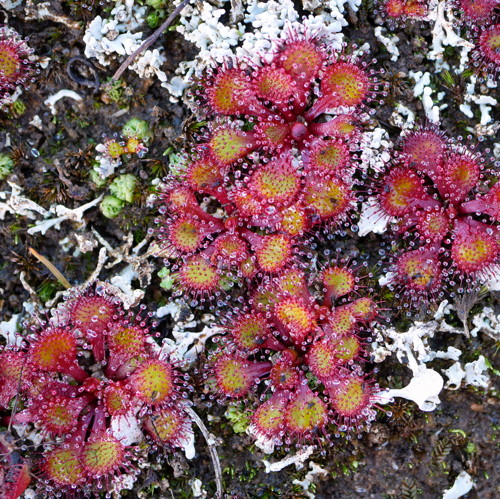
Drosera lowriei. Photo © Thilo Krueger.
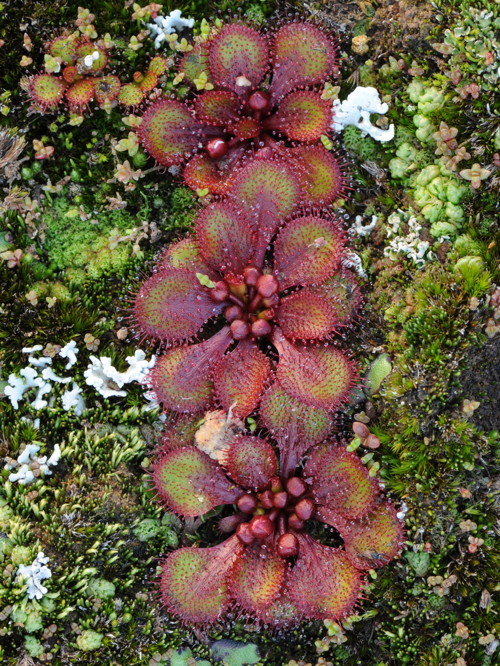
Drosera lowriei. Photo © Richard Nunn.
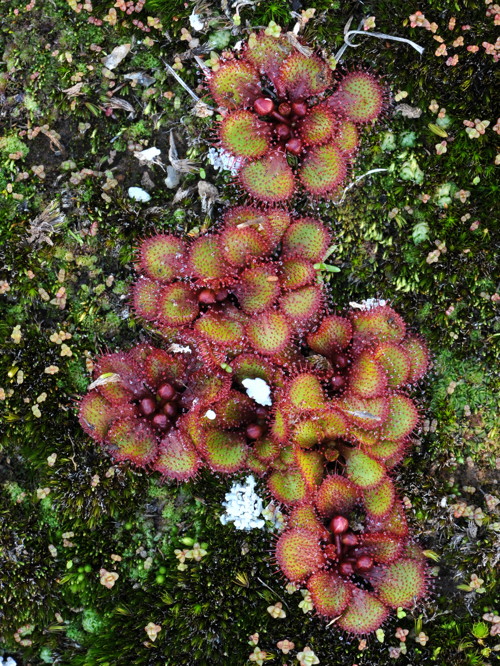
Drosera lowriei. Photo © Richard Nunn.
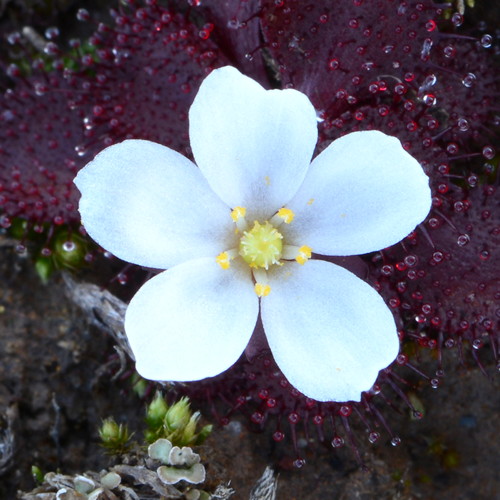
Drosera lowriei. Photo © Richard Nunn.
Drosera lunata Buch.-Ham. ex DC.
The epithet, lunata, is derived from the Latin lunatus (crescent-shaped), in reference to the curvature of the lamina.
Australia, N.S.W. – Evans Head; southwest Rocks. QLD – Atherton; Beerwah; Cairns; Caloundra; Herberton; Jardine River; Mackay; Mareeba; Mooloolaba; Tozers gap near Lockhart River; Whitsunday Island. Cambodia; Hong Kong; India; Kashmir; Laos; Nepal; Okinawa; Ryukyu Islands; Taiwan; Thailand, Vietnam.
Grows in seasonally wet sandy soils in Melaleuca woodlands; marginal rainforest; and in open woodlands.
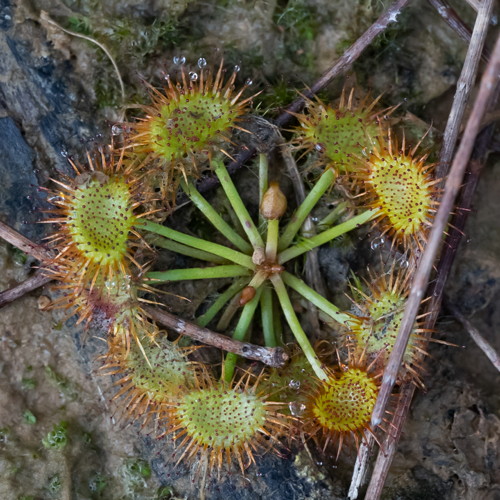
Drosera lunata. Photo © Boaz Ng.
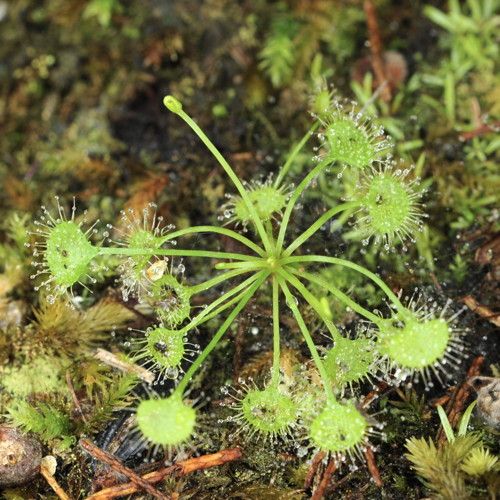
Drosera lunata. Photo © Richard Nunn.
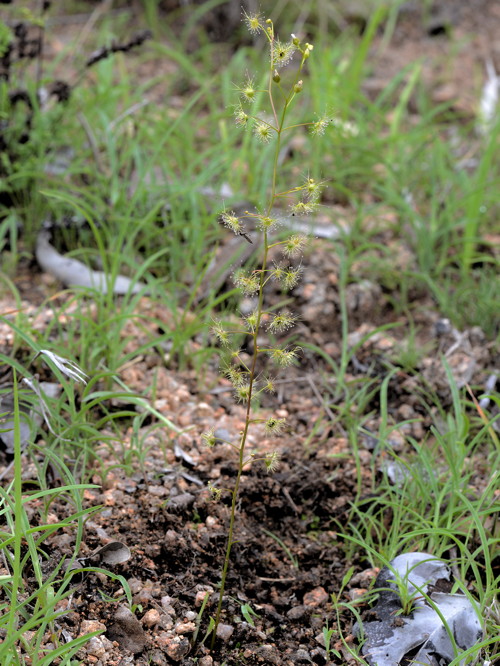
Drosera lunata. Photo © Richard Nunn.
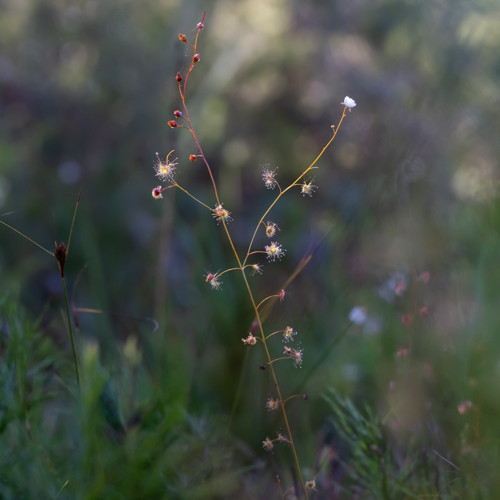
Drosera lunata. Photo © Boaz Ng.
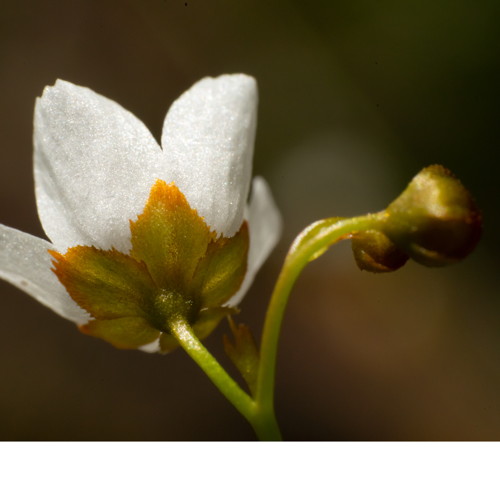
Drosera lunata. Photo © Boaz Ng.
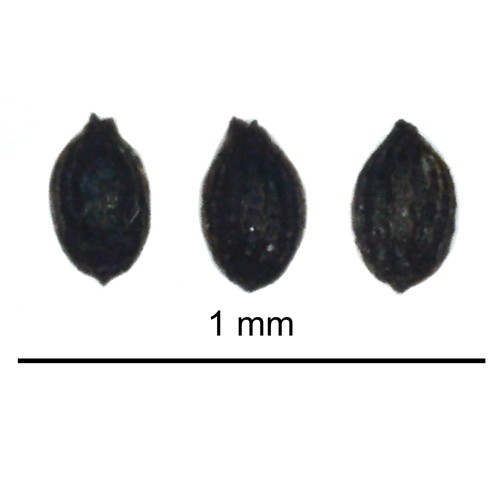
Drosera lunata. Photo © Boaz Ng.
Drosera macrantha Endl.
The epithet, macrantha, is derived from the Greek macros (large) and anthos (flower), in reference to its flower, which was comparatively large for the Drosera species known at the time.
Western Australia – Perth; Muchea; Bodallin; Coolup.
Grows in sandy soils on heathland and in Banksia, wandoo and jarrah woodlands.
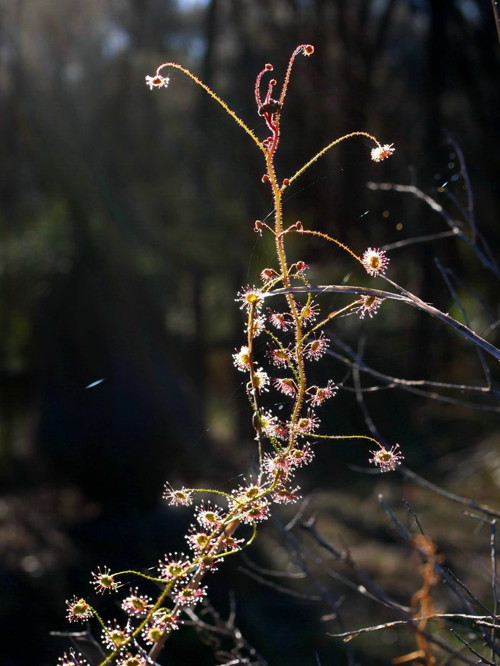
Drosera macrantha. Photo © Thilo Krueger.
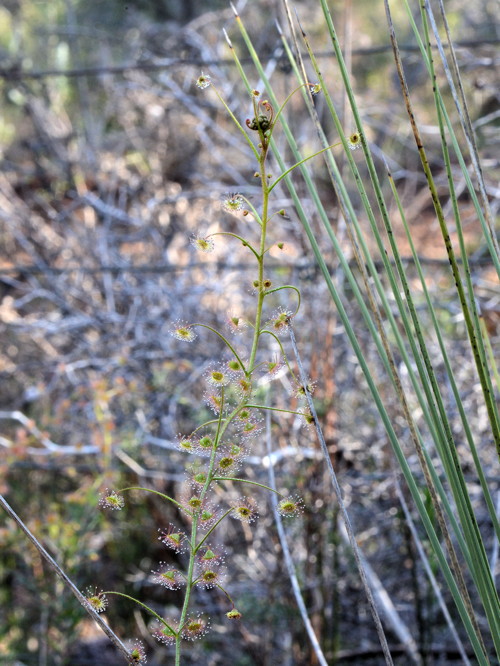
Drosera macrantha. Photo © Richard Nunn.
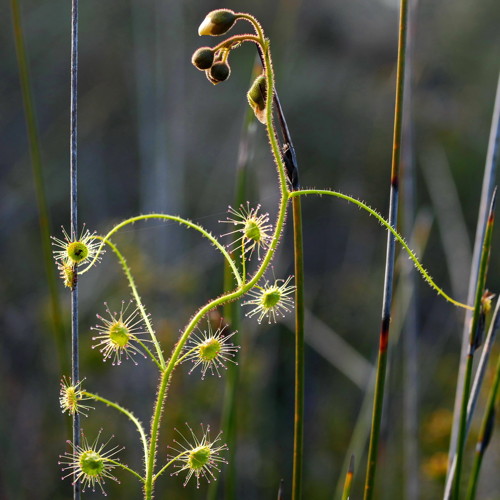
Drosera macrantha. Photo © Thilo Krueger.
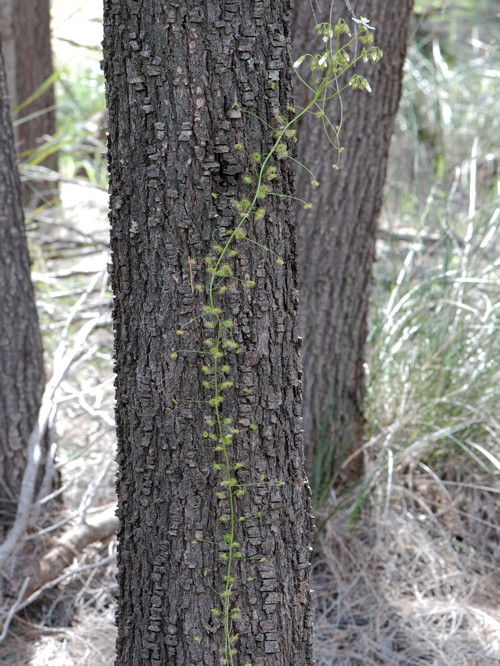
Drosera macrantha. Photo © Richard Nunn.
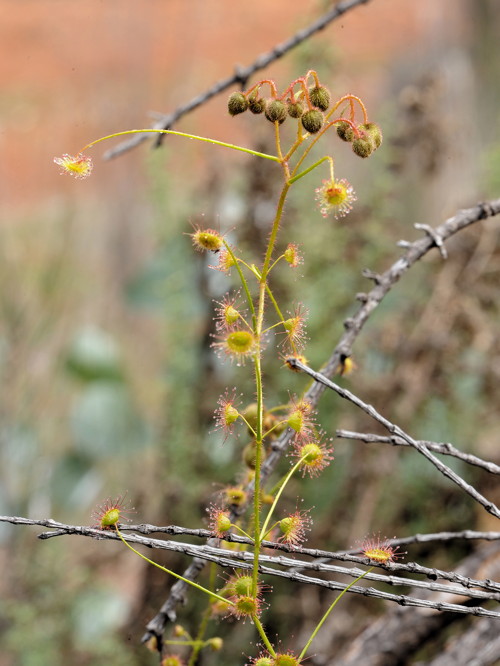
Drosera macrantha. Photo © Richard Nunn.
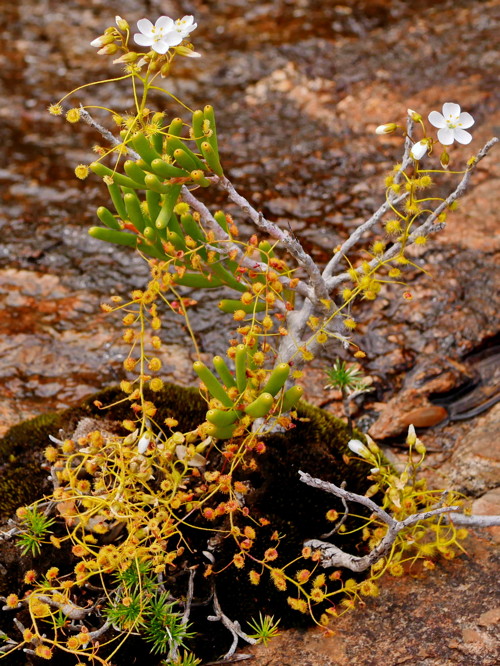
Drosera macrantha. Photo © Thilo Krueger.
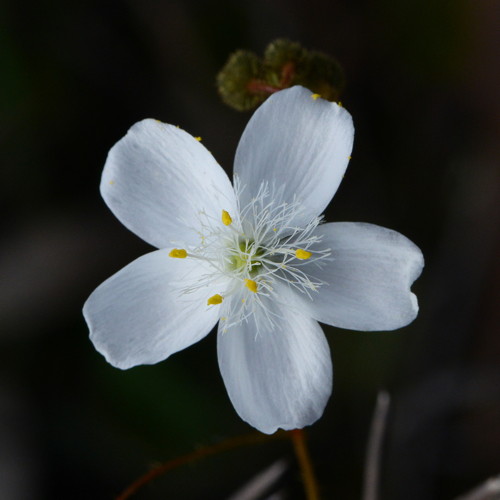
Drosera macrantha. Photo © Richard Nunn.
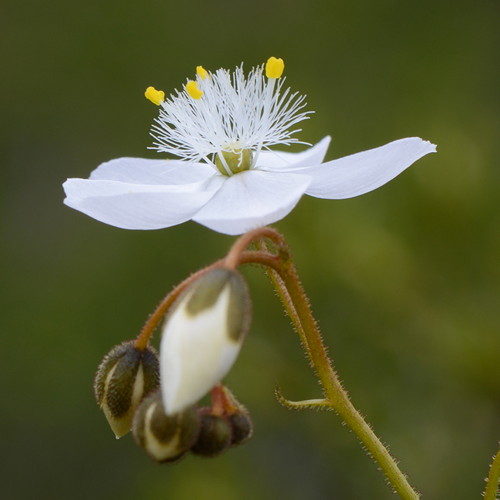
Drosera macrantha. Photo © Richard Nunn.
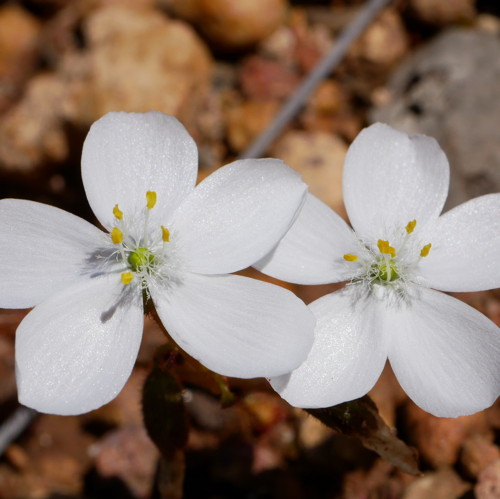
Drosera macrantha. Photo © Thilo Krueger.
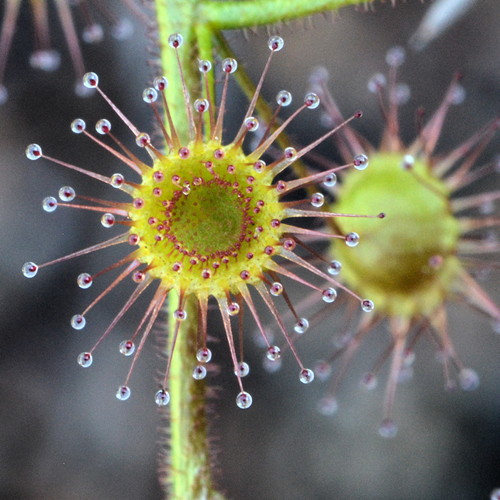
Drosera macrantha. Photo © Richard Nunn.
Drosera macropetala (Diels) T.Krueger & A.Fleischm
The specific epithet, from the Greek macro‐ (=large) and petalum (=petal), refers to the comparatively large petals of this species.
Drosera macropetala is known from the Dandaragan Plateau between Dandaragan and Mogumber, about 100–150 km north of Perth.
This species appears to be restricted to the upper slopes of lateritic hills where it grows in low heath in poorly drained, sandy clay with laterite. Possibly also occurs in open Eucalyptus (“white gum”) forest.
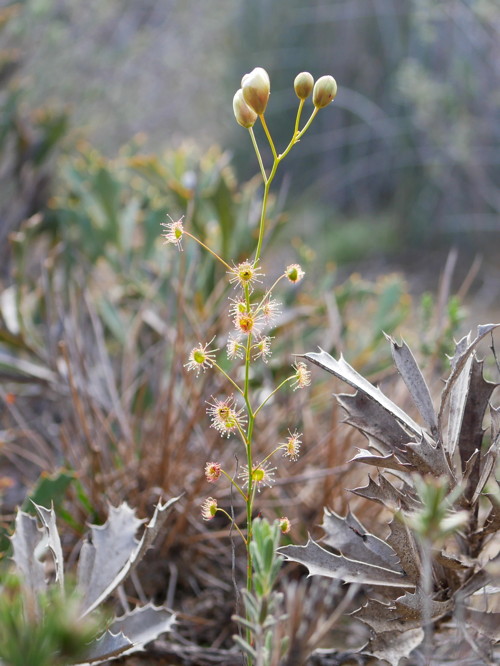
Drosera macropetala. Photo © Thilo Krueger.
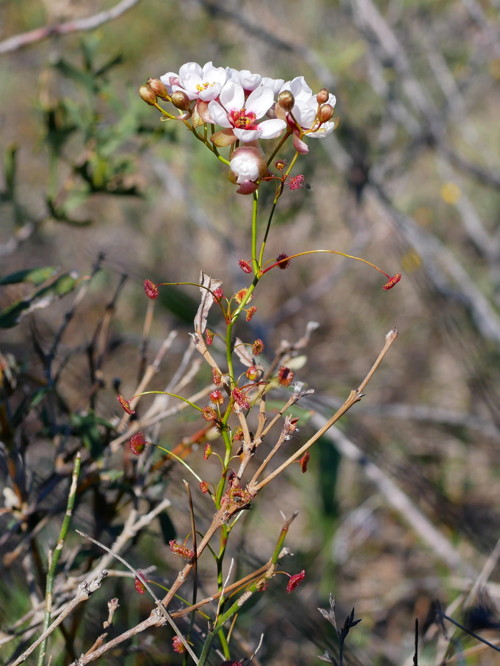
Drosera macropetala. Photo © Thilo Krueger.
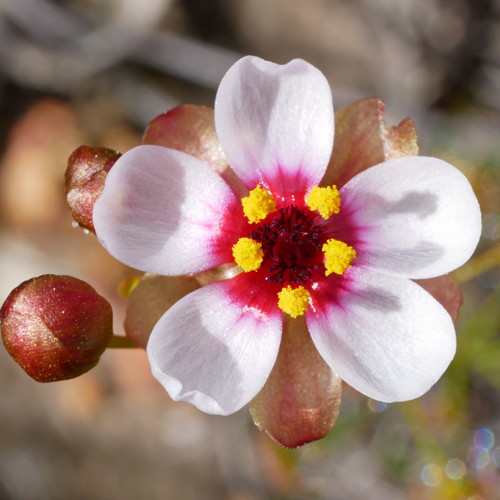
Drosera macropetala. Photo © Thilo Krueger.
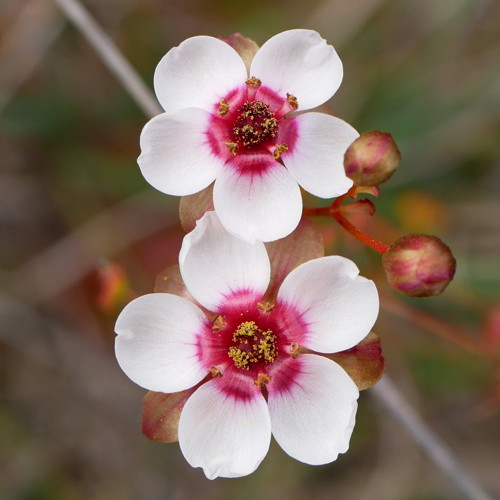
Drosera macropetala. Photo © Thilo Krueger.
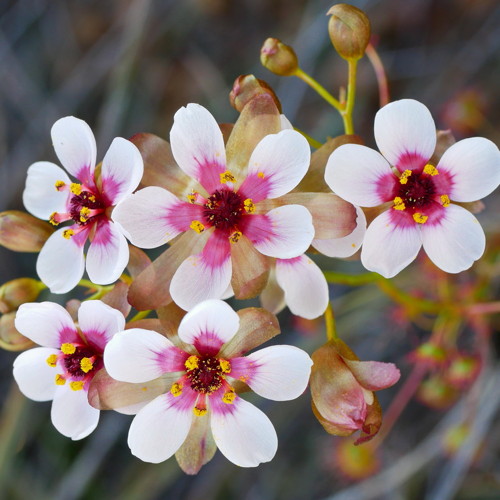
Drosera macropetala. Photo © Thilo Krueger.
Drosera macrophylla Lindl.
The epithet, macrophylla, is derived from the Greek macro (large) and phyllon (leaf), in reference to its much larger leaf proportions as compared to the rather small rosettes of Australian Drosera species known in 1839.
Western Australia – Calingiri; Miling; Wongan Hills.
Grows in loam soils in full sun on the aprons of granite outcrops. Also throughout the surrounding Casuarina and Acacia thickets associated with granite outcrops, generally where the winter rain runoff is at its greatest. Also grows in species diverse shrubland in clayey, gritty sand over decomposed granite rock in open spaces, lightly shaded by the leafy canopy. All locations dry out by summer.
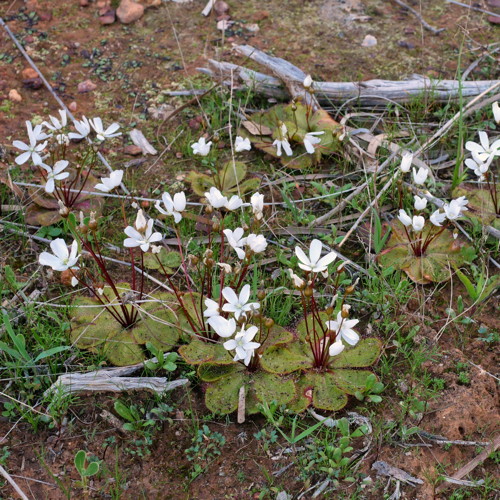
Drosera macrophylla. Photo © Thilo Krueger.
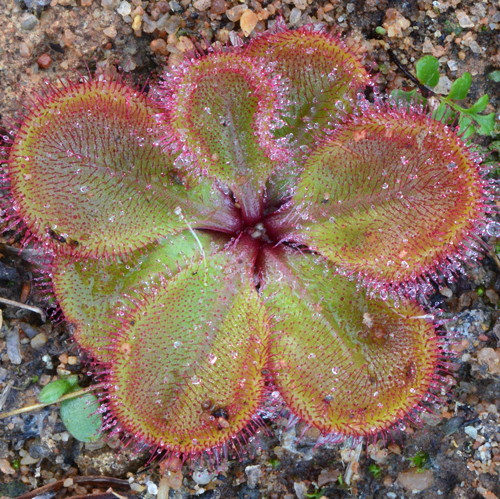
Drosera macrophylla. Photo © Richard Nunn.
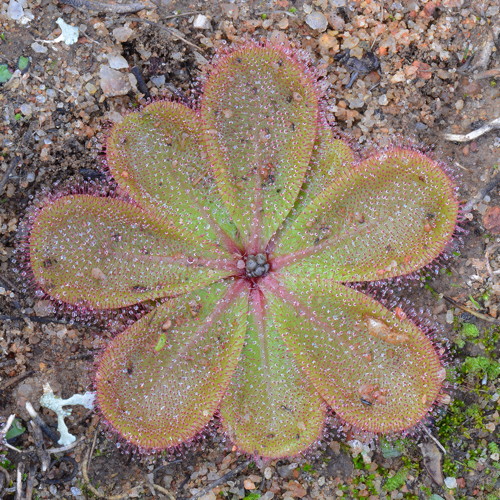
Drosera macrophylla. Photo © Richard Nunn.
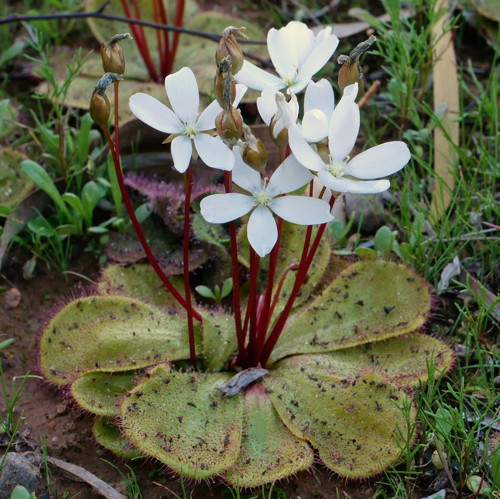
Drosera macrophylla. Photo © Thilo Krueger.
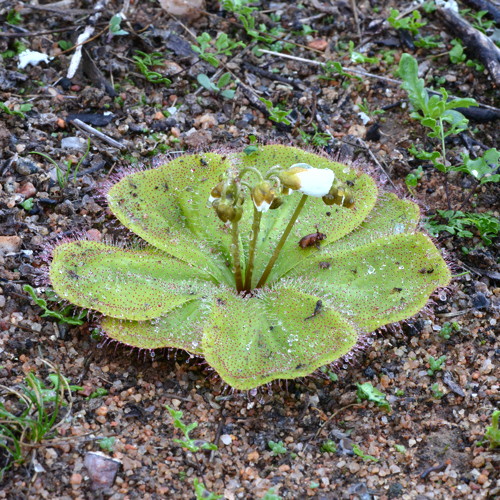
Drosera macrophylla. Photo © Richard Nunn.
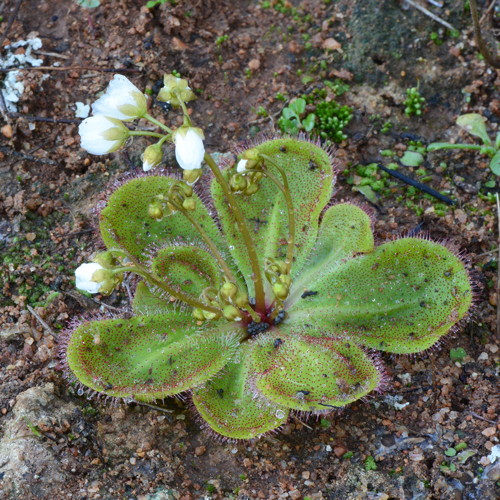
Drosera macrophylla. Photo © Richard Nunn.
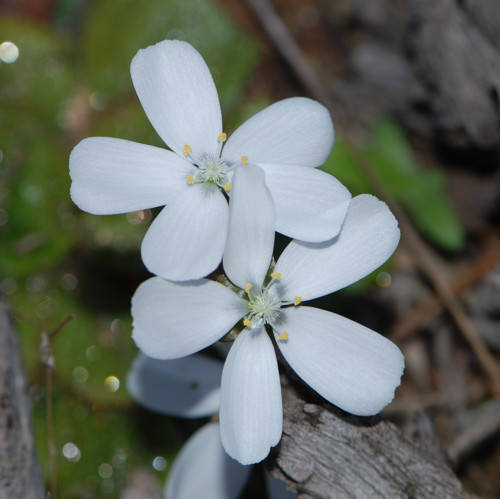
Drosera macrophylla. Photo © Richard Nunn.
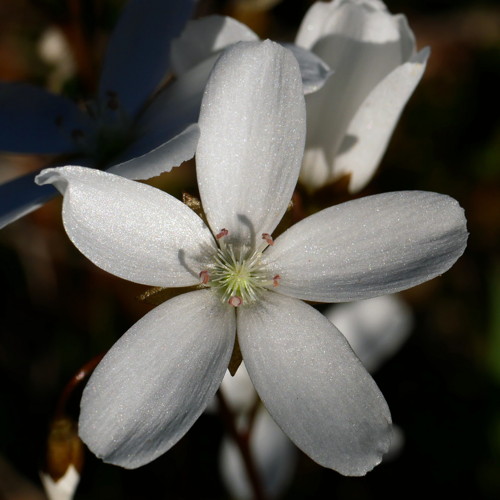
Drosera macrophylla. Photo © Thilo Krueger.
Drosera magna (N.G.Marchant & Lowrie) Lowrie
The epithet, magna, is derived from the Latin magnus (large), in reference the rather large basal rosette of leaves.
Western Australia – Jurien; Eneabba; Badgingarra; Cataby.
Grows in deep silica sand in heathland on the coastal plains north of Perth. All locations dry out by summer.
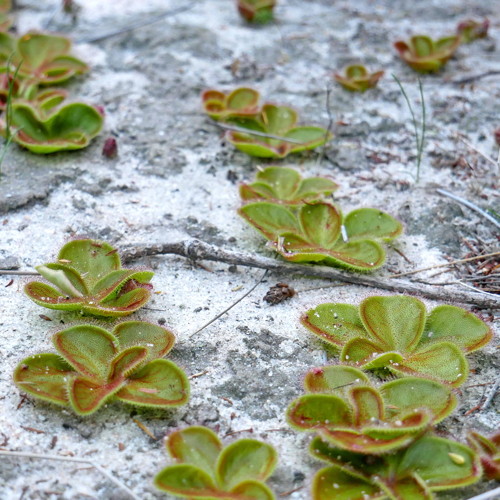
Drosera magna. Photo © Thilo Krueger.
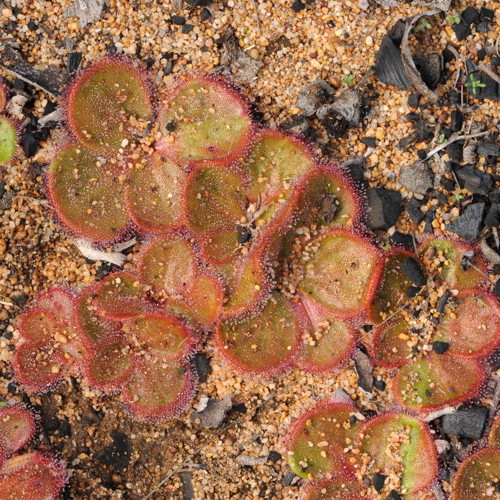
Drosera magna. Photo © Richard Nunn.
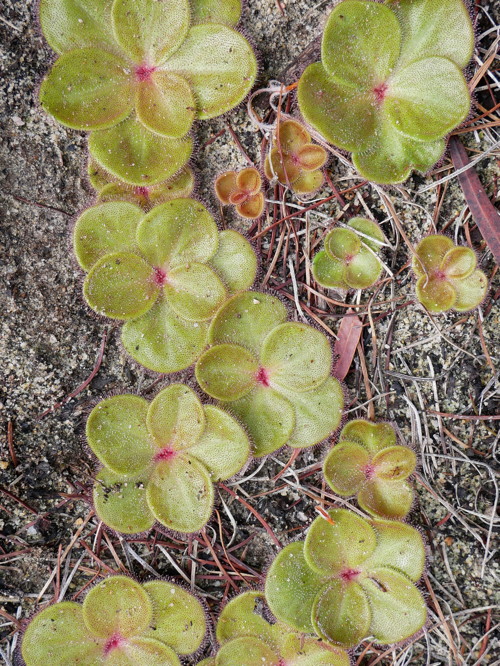
Drosera magna. Photo © Thilo Krueger.
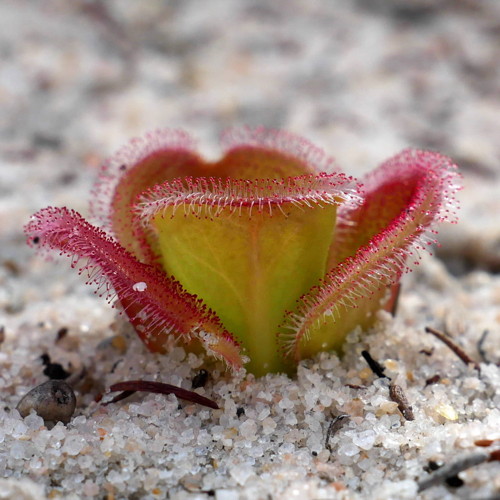
Drosera magna. Photo © Thilo Krueger.
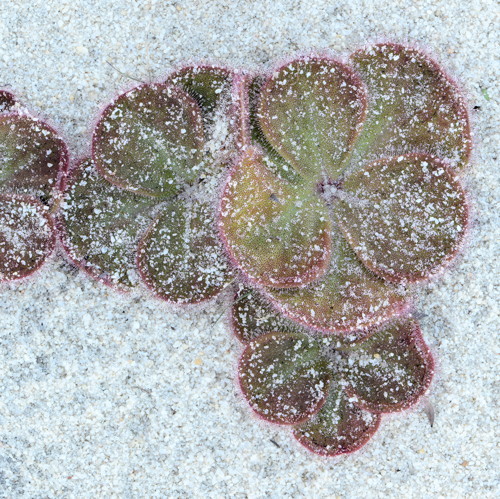
Drosera magna. Photo © Richard Nunn.
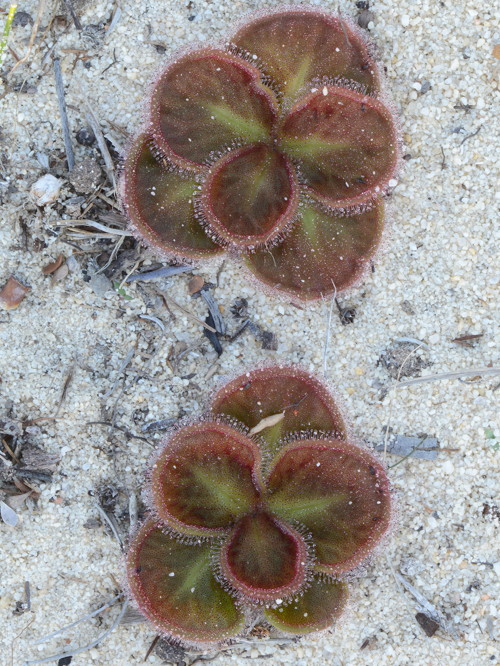
Drosera magna. Photo © Richard Nunn.
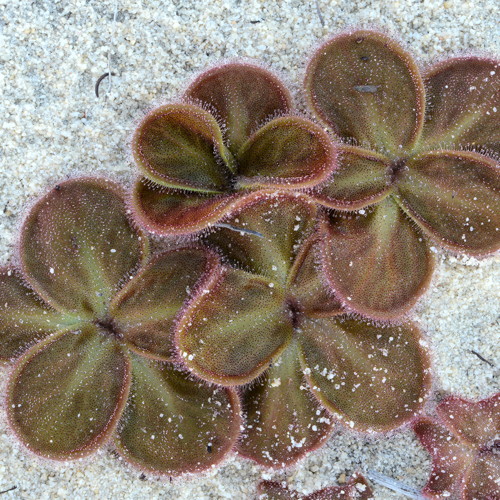
Drosera magna. Photo © Richard Nunn.
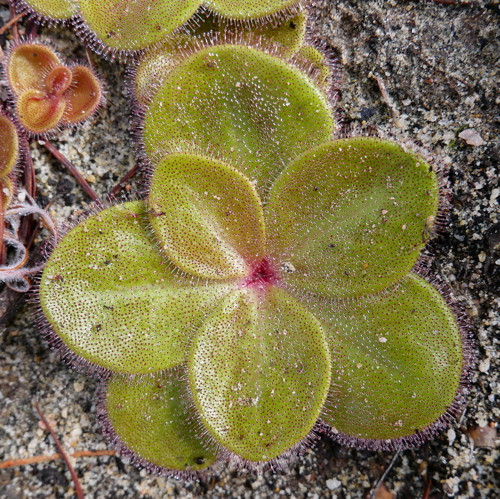
Drosera magna. Photo © Thilo Krueger.
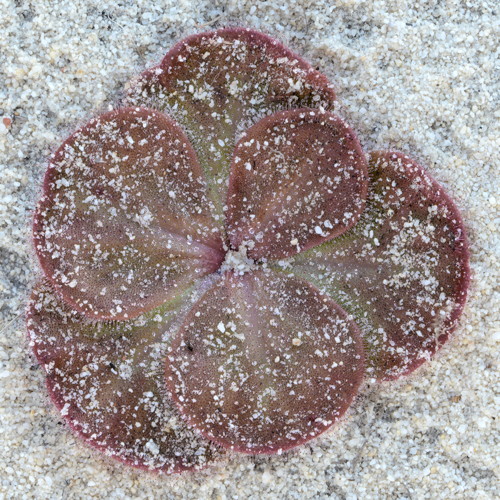
Drosera magna. Photo © Richard Nunn.
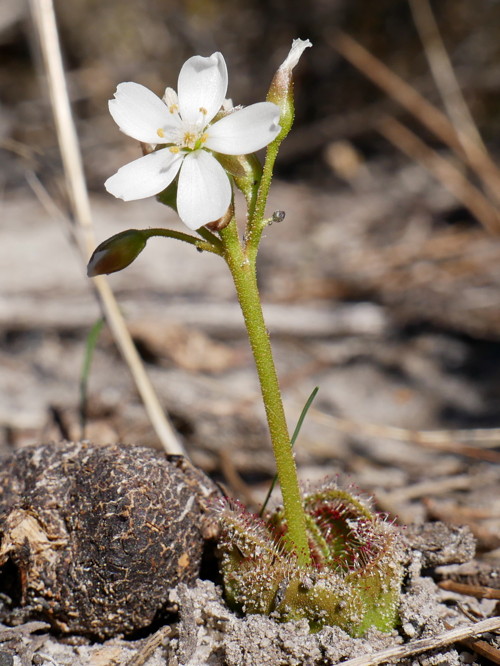
Drosera magna. Photo © Thilo Krueger.
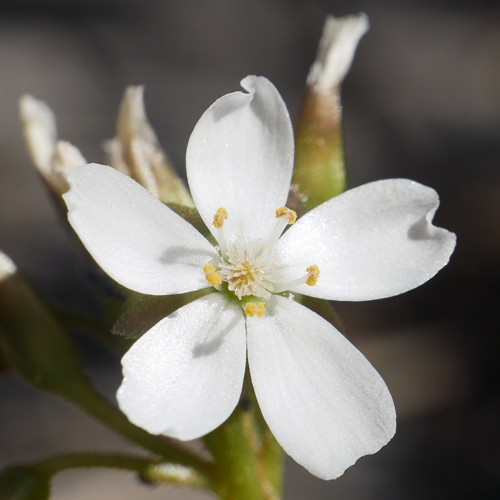
Drosera magna. Photo © Thilo Krueger.
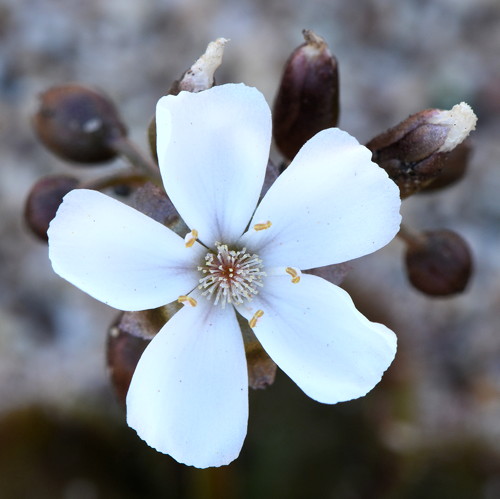
Drosera magna. Photo © Richard Nunn.
Drosera major (Diels) Lowrie
The epithet, major, is derived from the Latin major (larger), in reference to its much larger proportions as compared to its closest relative, Drosera bulbosa.
Western Australia – Mingenew; Paynes Find; Yalgoo goldfields.
Grows in loam soils over decomposed granite rock on gently sloping ground amongst scattered, open shrubs; on the aprons of granite outcrops with Borya species; and scattered throughout the surrounding Acacia thickets associated with granite outcrops, generally where the winter rain runoff is at its greatest.
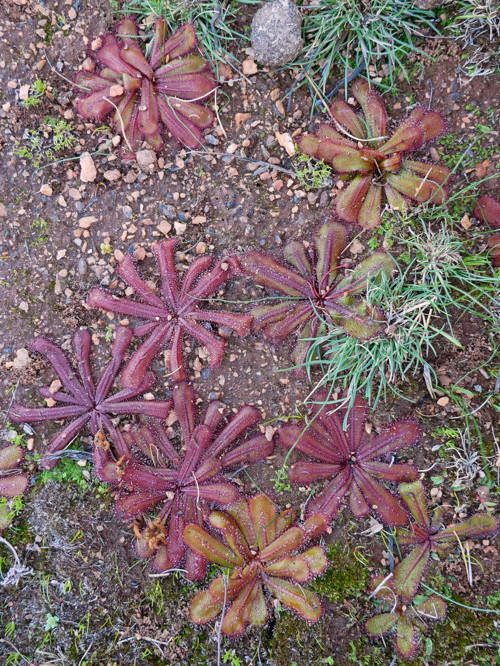
Drosera major. Photo © Thilo Krueger.
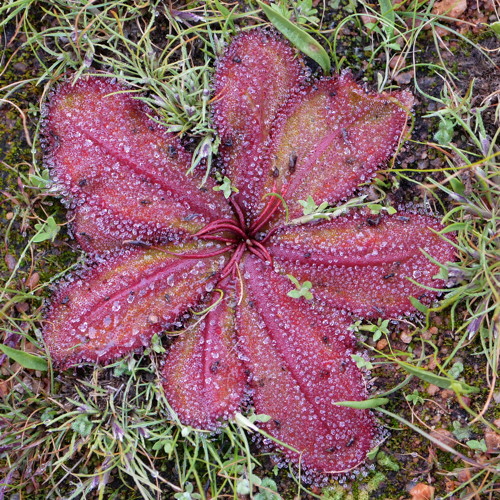
Drosera major. Photo © Thilo Krueger.
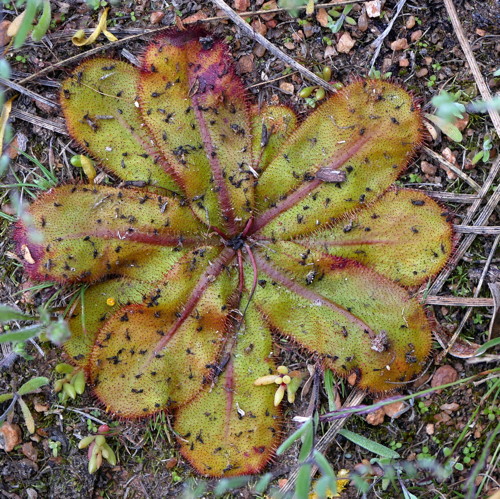
Drosera major. Photo © Thilo Krueger.
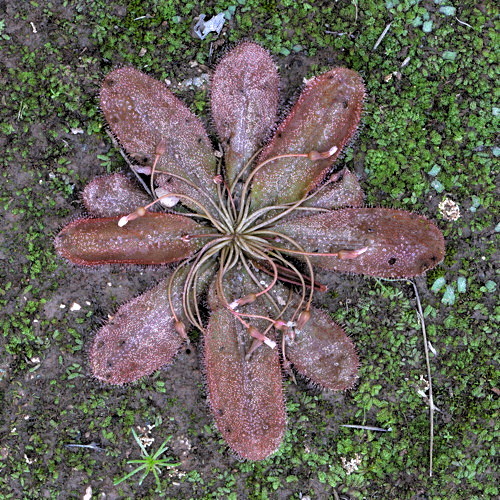
Drosera major. Photo © Richard Nunn.
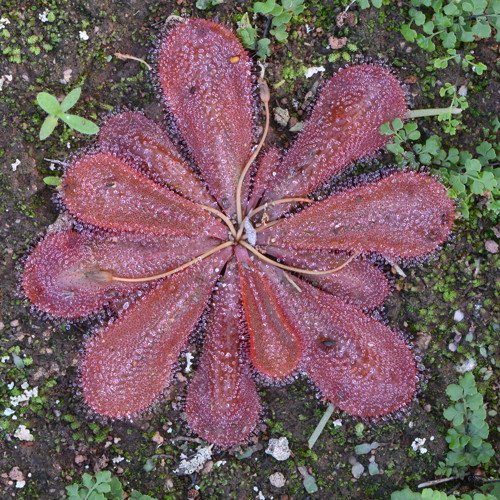
Drosera major. Photo © Richard Nunn.
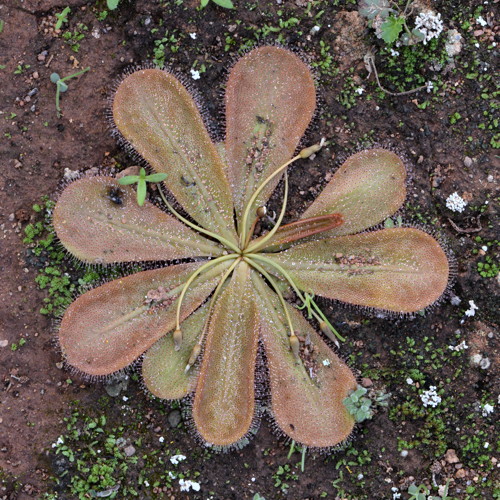
Drosera major. Photo © Richard Nunn.
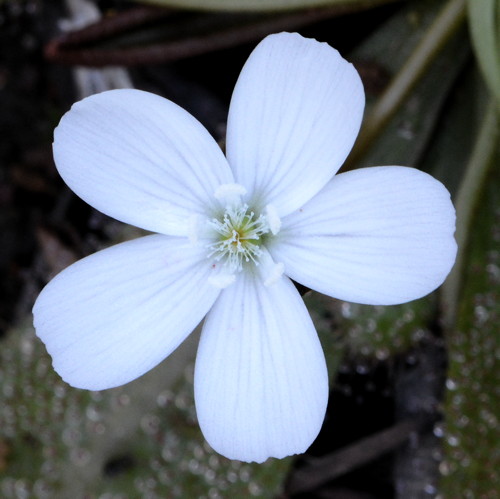
Drosera major. Photo © Richard Nunn.
Drosera marchantii DeBuhr
The epithet, marchantii, honours Neville Graeme Marchant, a Western Australian botanist who was formerly a director of the Western Australian Herbarium.
Western Australia – Bunbury; Harvey; Dwellingup; Pinjarra; Dardanup.
Grows in sand-laterite and leaf litter compost in well-shaded locations in open jarrah woodland. All locations dry out in summer.
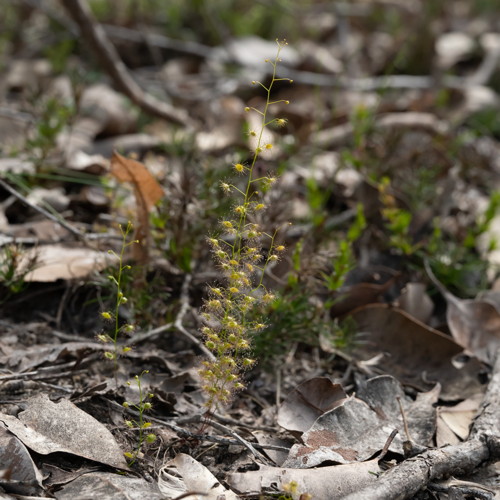
Drosera marchantii. Photo © Boaz Ng.
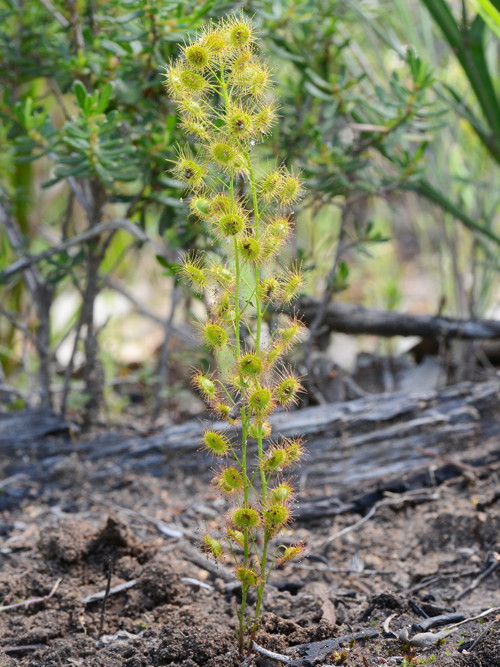
Drosera marchantii. Photo © Richard Nunn.
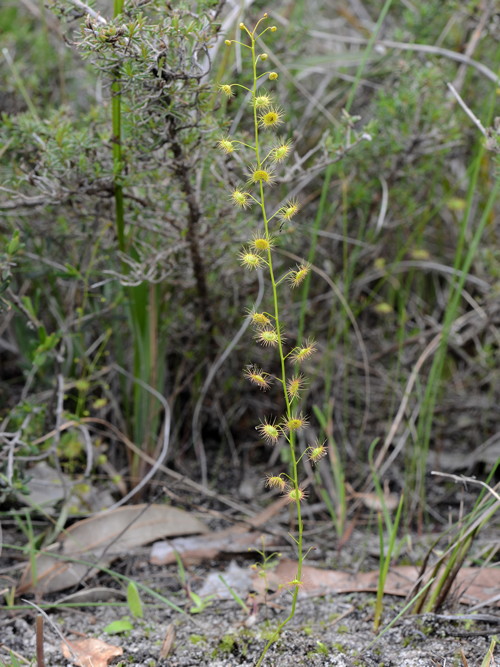
Drosera marchantii. Photo © Richard Nunn.
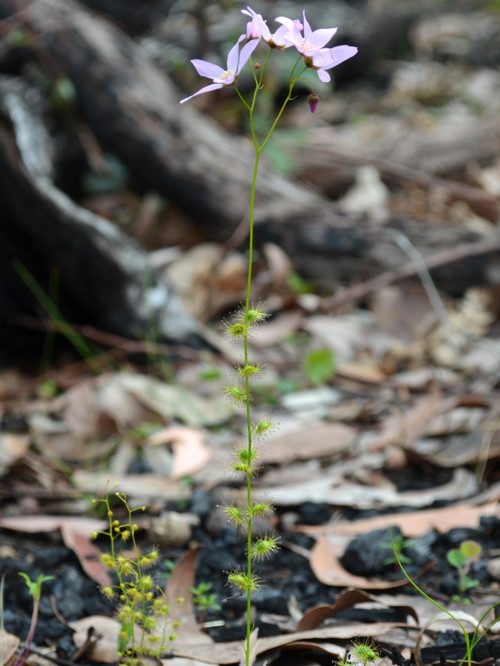
Drosera marchantii. Photo © Thilo Krueger.
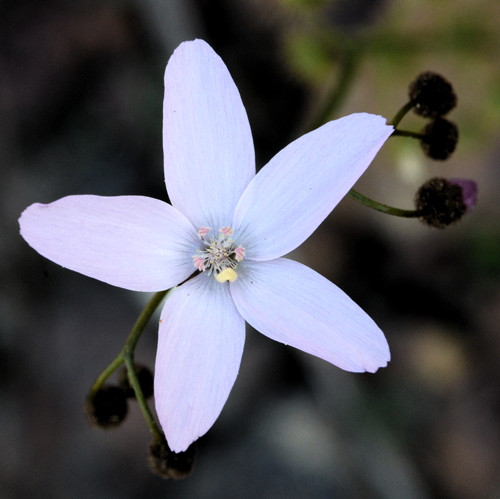
Drosera marchantii. Photo © Richard Nunn.
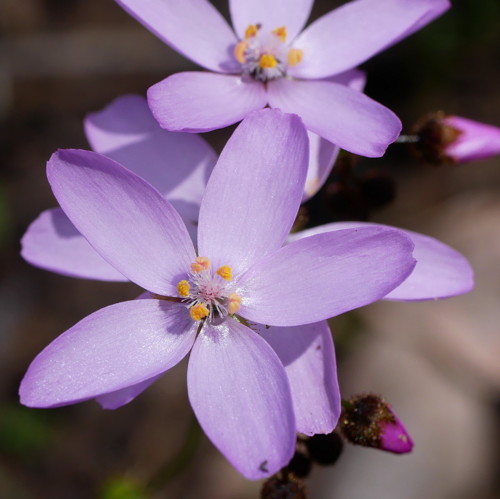
Drosera marchantii. Photo © Thilo Krueger.
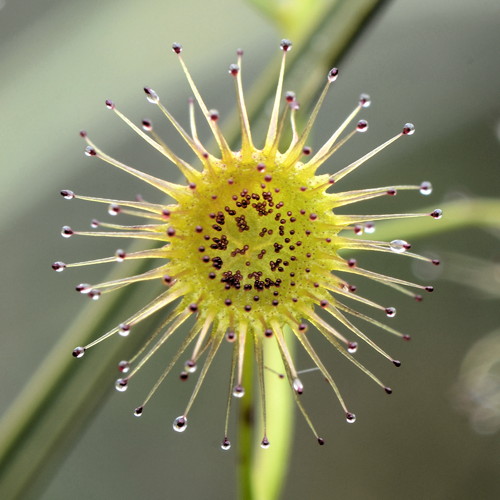
Drosera marchantii. Photo © Richard Nunn.
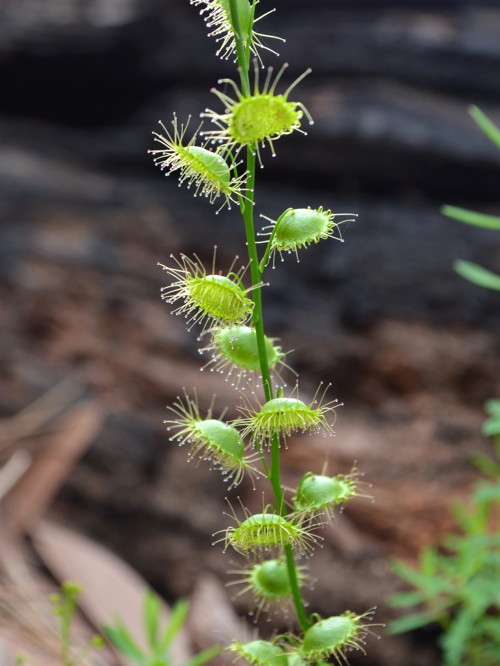
Drosera marchantii. Photo © Thilo Krueger.
